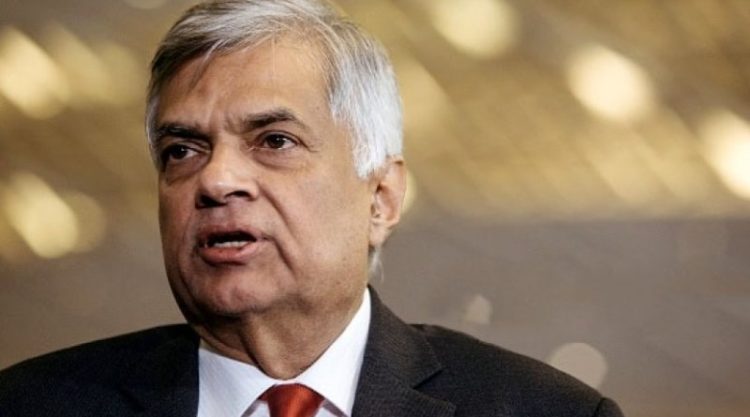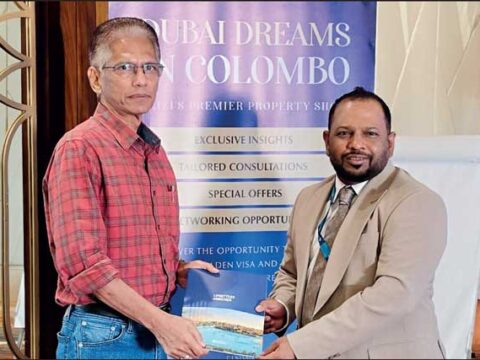EUROASIA REVIEW
By Dr. S. I. Keethaponcalan
Sri Lanka’s economic crisis instigated a people’s protest against the government. The stated objective was a system change. The protest continued for about two months and showed signs of re-escalation in the first week of May. For example, a nationwide hartal (shutdown) was organized and successfully carried out on May 6, 2022.
An international news headline declared, “Massive hartal brings Sri Lanka to (a) standstill as workers demand government’s resignation.” Threats of further nationwide strikes and hartals followed. University students under the organizational structure of the Inter-University Student Federation surrounded parliament. Reportedly many lawmakers could not leave parliament. In response, the government re-imposed the emergency regulations. The government was also looking for a way out of the political crisis, and the main aim was to appease the angry protesters who were slowly growing aggressive.
Resignation and Hypocrisy
President Gotabaya Rajapaksa suggested that his brother Mahinda Rajapaksa should resign, paving the way for an interim government. There was an element of hypocrisy in the president’s suggestion. One of the main reasons for the present crisis was the president. His shortsighted policies certainly exacerbated the problem. For example, he introduced a hundred percent organic farming despite the warning that such a policy would lead to a catastrophe. One cannot underestimate the contribution of, for example, the forced dollar conversion and the liberal printing of Sri Lankan rupees to the economic crisis. The prime minister remained detached from governance, leaving the administrative responsibilities to his brothers, President Gotabaya Rajapaksa and Economic Affairs Minister Basil Rajapaksa. The president’s demand made Mahinda Rajapaksa the sacrificial lamb.
Mahinda Rajapaksa refused to resign. He challenged the president to fire him if he wanted. Mahinda Rajapaksa maintained that he does not have to step down because he has the parliamentary majority. Eventually, Mahinda Rajapaksa budged. Many believe that Mahinda Rajapaksa succumbed to presidential and public pressure. It is also possible that Mahinda Rajapaksa was convinced by his brothers, Gotabaya and Basil, to resign as part of a larger plan where his and his family’s interest would be guaranteed. Perhaps, a comeback plan for him and the family is a part of this plan. It is important to remember that many believed that Rajapaksa’s political life was over when he lost the 2015 presidential election. Nevertheless, he came back stronger in 2020. He resigned and stepped down on May 10, 2022.
Violence
Before stepping down, Mahinda Rajapaksa met his supporters at his official residence, the Temple Trees, a colonial building located in the heart of Colombo. Emotions ran high. The crowd got out of the building and attacked the protesters camped outside the Temple Trees. They also moved to the Galle Face green and attacked the “GotaGoGama” protesters. The attacks ignited a violent response from the dissatisfied citizens nationwide, and a mini-riot followed. The rioters attacked government supporters and their properties. Several buildings, including the ancestral home of the Rajapaksa brothers, were burnt down. According to newspaper reports from Colombo, eight people were killed, and about a hundred buildings were destroyed. Even police and military officers deemed government loyalists were beaten by the general public. The government imposed a curfew.
Mahinda Rajapaksa could not leave his official residence after resigning as protesters surrounded the premise demanding the return of looted resources. Since the authorities feared that the angry protesters could assault Rajapaksa himself, he was clandestinely moved to an unknown location. It is believed that he has taken shelter at the Trincomalee naval base. Protesters believed that he was trying to escape to another country. On May 10, Namal Rajapaksa, the elder son of Mahinda Rajapaksa, maintained, “my father is safe, he is at a safe location and he is communicating with the family.” He also declared that his father would not flee the country. Consequently, Sri Lanka moved into a state of instability and unpredictability.
The resignation became official when the president gazetted the notification. Addressing the nation on May 11, President Gotabaya Rajapaksa announced that he would appoint a new prime minister and a cabinet within a week. He made further concessions when he said that the 19th Amendment to the Constitution, which was brought in as a democratization tool, would be reintroduced. Removing the 19th Amendment was one of his first actions as president. Hence, the promise conceded defeat. The promise of a new prime minister turned attention to the SJB and its leader Sajith Premadasa. At the core of the idea of an interim administration was forming a government absorbing the SJB (and other opposition parties).
Wickremesinghe as Prime Minister
In a largely unexpected move, the president appointed Ranil Wickremesinghe the prime minister, and he was sworn in on May 12. Wickremesinghe is a seasoned politician and the incumbent leader of the United National Party (UNP). The UNP was routed with only one member of parliament appointed from the national list. Although defeated in the 2020 parliamentary election, Wickremesinghe entered parliament through the (token) national list seat in June 2021. Interestingly, he managed to become the prime minister despite having only one seat in the national legislature.
Nevertheless, the question is, why Wickremesinghe? A related question is why Premadasa was not offered the premiership? Let us deal with the Premadasa question first. Premadasa’s offer to lead the interim government was conditional. He wanted President Rajapaksa to step down as a precondition. Rajapaksa was not willing to step down. Therefore, appointing Premadasa was a nonstarter for Gotabaya Rajapaksa. On the other hand, Wickremesinghe had three main strengths.
One, he is a personal friend of the Rajapaksa clan. Despite the political and party differences, Wickremesinghe maintained a cordial friendship, especially with Mahinda Rajapaksa. For example, after the presidential election defeat of Rajapaksa in 2015, Wickremesinghe almost rescued Rajapaksa. Moreover, Wickremesinghe did not also insist on the removal of the president. Therefore, one could safely argue that Wickremesinghe’s appointment was designed to save Gotabaya Rajapaksa’s skin.
Two, Wickremesinghe has the potential to resolve or at least effectively handle the economic crisis. Unlike Gotabaya Rajapaksa or Sajith Premadasa, Wickremesinghe could boast considerable political-administrative experience. He was a part of several UNP administrations since the late 1970s and served as prime minister on several occasions. Economic development was (and most like is) his main slogan. He ran for president twice, in 1999 and 2005. On both occasions, he contested on the platform of economic development. In addition, he promoted peace and peace talks with the Liberation Tigers of Tamil Eelam (LTTE) as a vehicle for economic growth. Moreover, his connections with international actors could also help bring in needed resources. For example, the United States has already announced its desire to work closely with Wickremesinghe. Also, India should be happy about his ascendancy. These factors could have also played a role in appointing him the prime minister.
Three, Wickremesinghe may be acceptable to a part of the “resistance” as the new prime minister. His experience and the people’s desperation could influence some Sri Lankans to accept him to run the country. Many feared that Gotabaya Rajapaksa could resort to military rule and violence could escalate in the immediate aftermath of Mahinda Rajapaksa’s exit. Wickremesinghe has the capacity to halt these possibilities. Hence the potential for public acceptance. Therefore, Wickremesinghe’s appointment was hardly a surprise. However, it is too early to predict whether Wickremesinghe would succeed in his present mission. His main problems include: (1) the dependency on the SLPP for the parliamentary majority and (2) the need to provide immediate relief to the suffering masses.
The dilemma of the Protester
Although the anti-government resistance did not have a fully defined objective, some protests wanted a system change. They wanted the SLPP government to “go.” Part of the objective was achieved with the resignation of Mahinda Rajapaksa. Gotabaya Rajapaksa is still in power. Hence, the protest remains an unfinished business, and many protesters are determined to carry forward the struggle.
The Wickremesinghe appointment has the potential to weaken or damage the resistance. Some protesters have already declared that they will not accept Wickremesinghe’s appointment as a solution. They wowed to set up a “RanilGoGama.” Therefore, it is clear that Wickremesinghe would encounter some resistance from the protesters. A notable factor is that it was the “nationwide” protest that brought Rajapaksa down. It is safe to assume that Wickremesinghe would find it difficult to continue if the majority of the people opposed his appointment and continued the street protest. A centralized RanilGoGama-type protest in front of the new prime minister’s residence or office would hardly be a significant issue. From a conflict resolution (and violence prevention) perspective, the smart move would be to accept Wickremesinghe’s appointment now and vote Gotabaya Rajapaksa out in 2024. If the economic issues are not resolved, Wickremesinghe will also go down, sooner or later.




